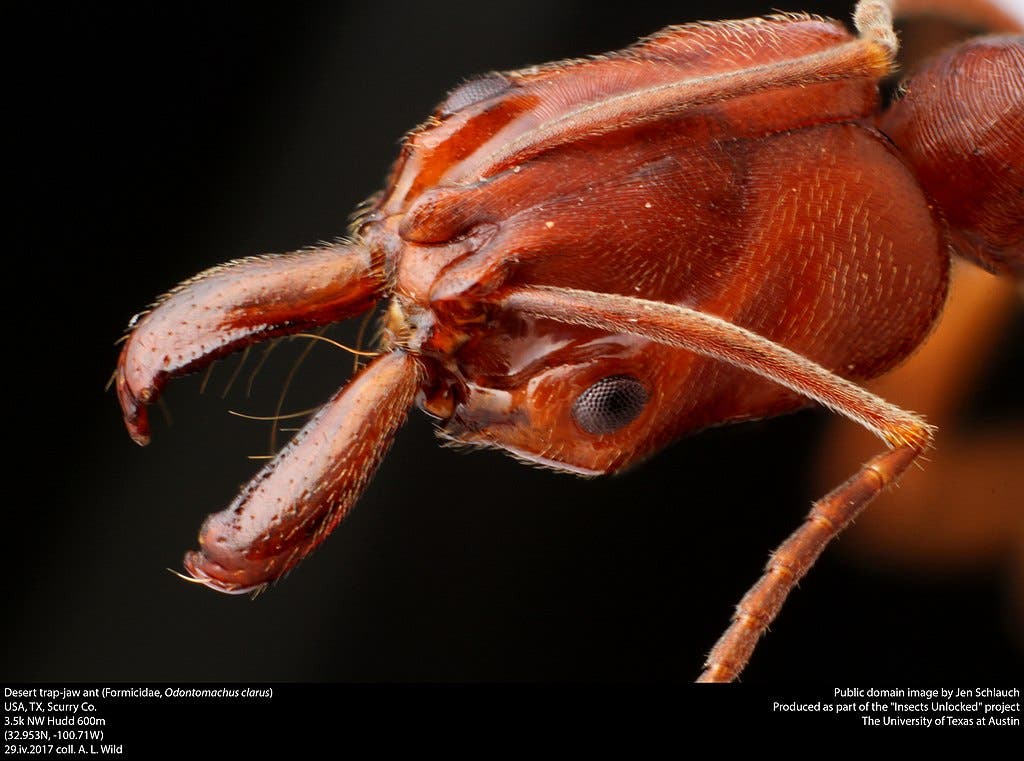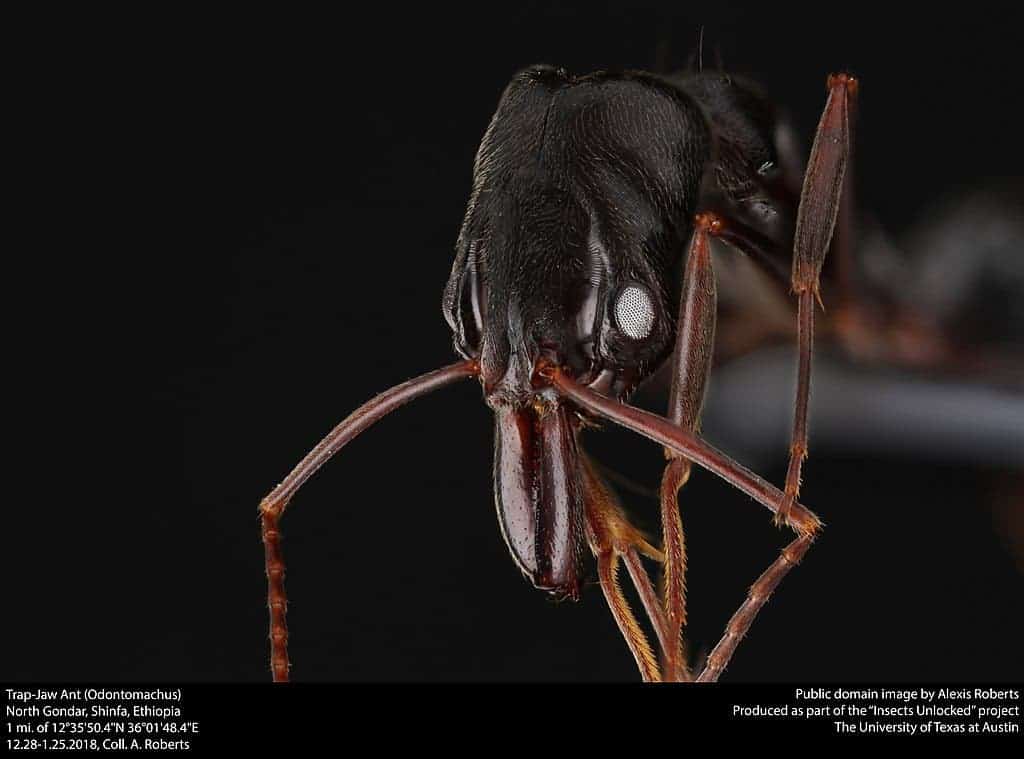Trap-jaw ants are infamous for having one of the strongest bites among all animals, but we didn’t really understand how they evolved from more traditional jaws. A new study looking at their evolutionary history found that the distinctive mechanism behind trap-jaws has evolved independently several times across the globe.

Unlike normal gripping jaws, which open and close through the contraction of muscles, trap-jaws use a complex mechanism to latch themselves open and clamp down when needed. This mechanism allows the jaws to store energy much like a spring, and this can be released to produce a lot of force quickly.
Bit bite
“One of the central questions in biology is: how does something complex arise from something simple?” said Professor Economo, who leads the Biodiversity and Biocomplexity Unit at the Okinawa Institute of Science and Technology Graduate University (OIST).
“Structures like the trap-jaw depend on multiple interacting parts to function correctly. At first it can be hard to see how such complexity can arise through the gradual stepwise changes of evolution. Nevertheless, when we look closely biologists can uncover evolutionary pathways to complexity.”
A new study led by Professor Economo and Dr. Douglas Booher from Yale University tracked the evolutionary history of trap-jaws, finding that they evolved independently, on several occasions, around the globe. Many of the species that sport such jaws come from the Strumigenys genus, which includes over 900 species found in tropical and subtropical regions.
For the study, the team sequenced the genetic information of 470 species in this genus recovered from all around the globe, including two types of gripping jaws (ancestral and with modified trap-jaws). From this, they reconstructed their family tree, which shows how different species are related.
Finally, they analyzed the jaws and ants themselves using micro-CT scanners, allowing them to create 3D models.
One of the first observations the team made was that only minor changes in structure were required to turn a gripping jaw into a trap-jaw. They further report that after this transition took place, the heads of (now trap-jawed) ants also started to morph quite dramatically. Muscle restructuring and changes in the length and open-width of the jaws were among the key changes.

“Previously, we had thought that all trap-jaws had both divergent form and divergent function, so it was much less obvious as to whether the change in function could occur at the start or whether a lot of changes to the form were first needed as a precondition,” said Professor Economo.
“But it turned out there are many intermediate forms out there of the trap-jaw mechanism that people just hadn’t identified before, some which differ only slightly from the ancestral form.”
In a collaboration with the lab of Andrew Suarez at the University of Illinois, the team also used high-speed video cameras to capture the jaws of Strumigenys ants in motion. They were thus able to determine that the trap-jaws have the fastest yet “acceleration of any animal body part that can return to its original position”. Such jaws were seen to accelerate a hundred times faster than standard mandibles, closing a thousand times faster than a human eye can blink. Which sounds impressively fast.
But they need all the speed they can get. Strumigenys ants use their jaws to capture springtails, their preferred prey, which employ a spring-loaded escape mechanism (hence the name). There’s still a lot we don’t understand about their hunting habits, but we do know that ants with shorter trap-jaws tend to be passive hunters, hiding in leaf litter with open jaws, waiting to bite down on any prey passing by. Longer-jawed ants, meanwhile, actively look for prey to bite into.
Both types of ants can be found in every region across the globe, the authors add. They believe that differences in behavior can explain why there are so many different shapes of trap-jaws out there. However, what is yet unclear is whether the genetic background that supported the change from normal- to trap-jaws is the same for all species, or whether they all reached the same solution through different genetic changes.
“It was really striking how we saw the same variations evolve again and again on different continents. It illustrates how repeatable evolution can be, finding similar solutions to life’s challenges,” said Professor Economo.
Going forward, the team plans to sequence the genomes of representative Strumigenys species across the world in order to determine this.
The paper “Functional innovation promotes diversification of form in the evolution of an ultrafast trap-jaw mechanism in ants” has been published in the journal PLOS Biology.


